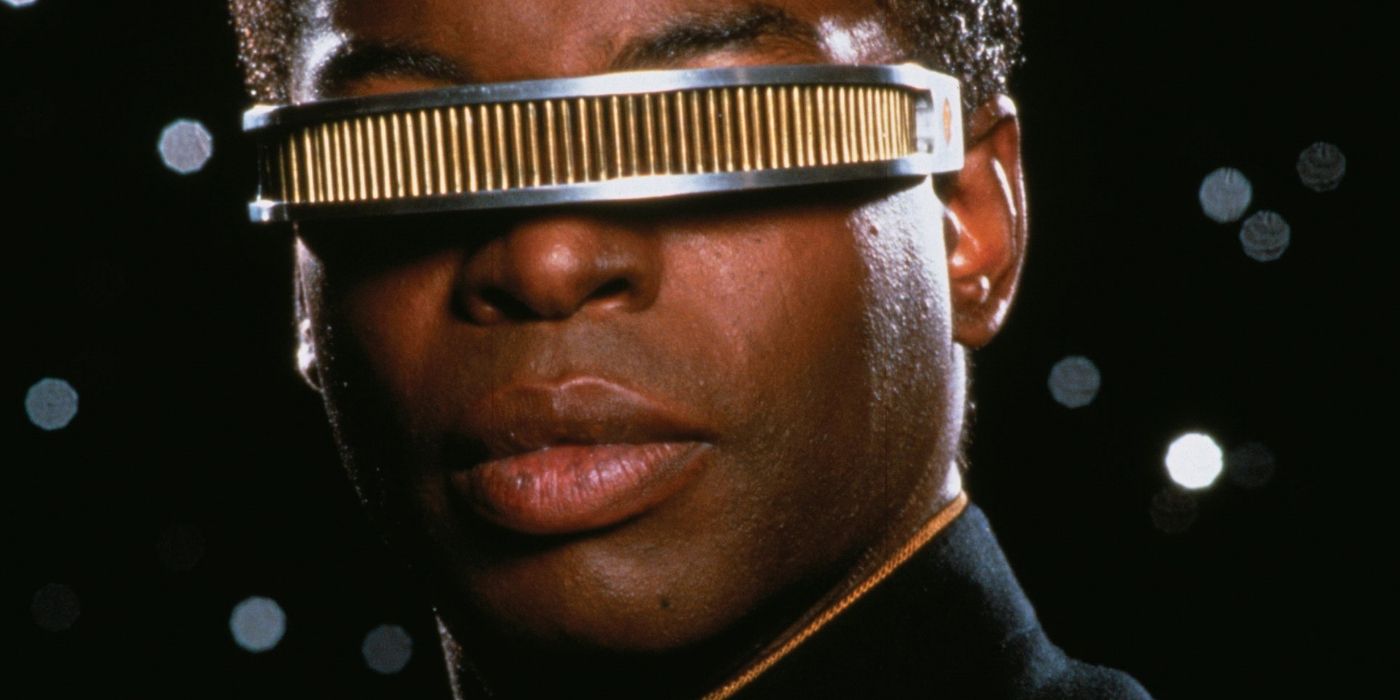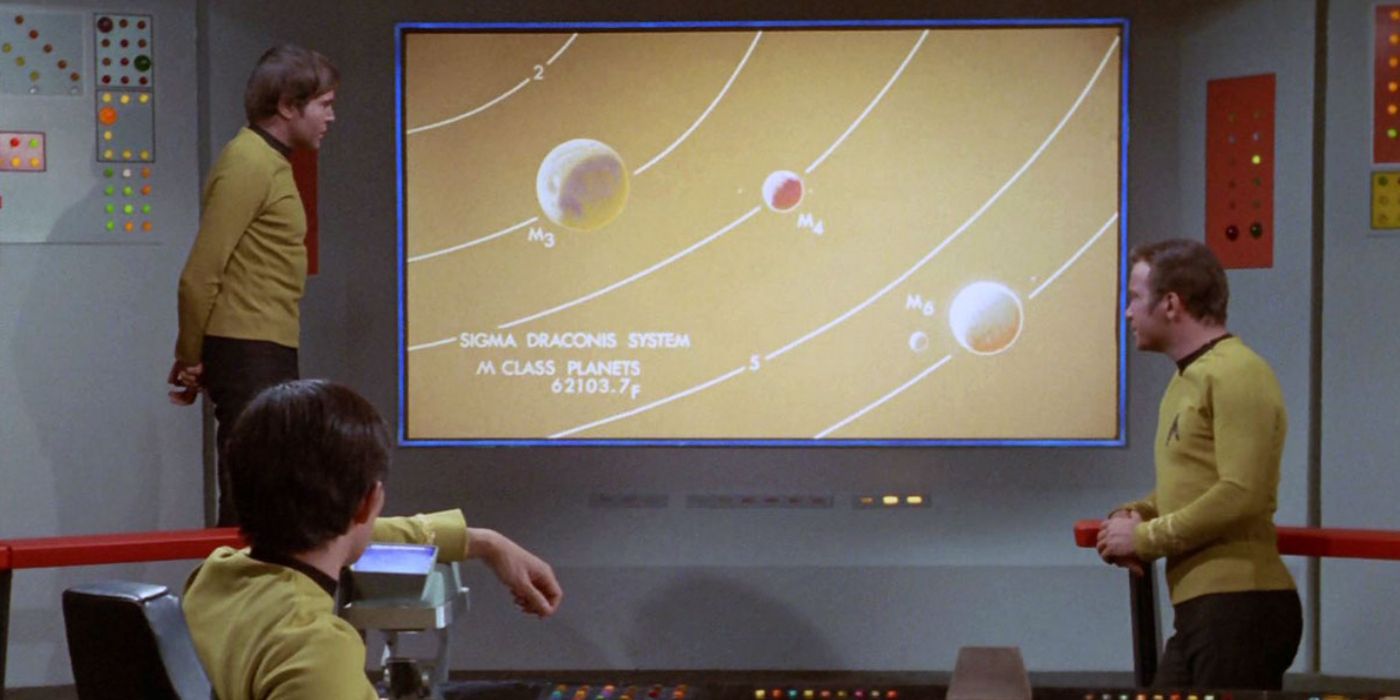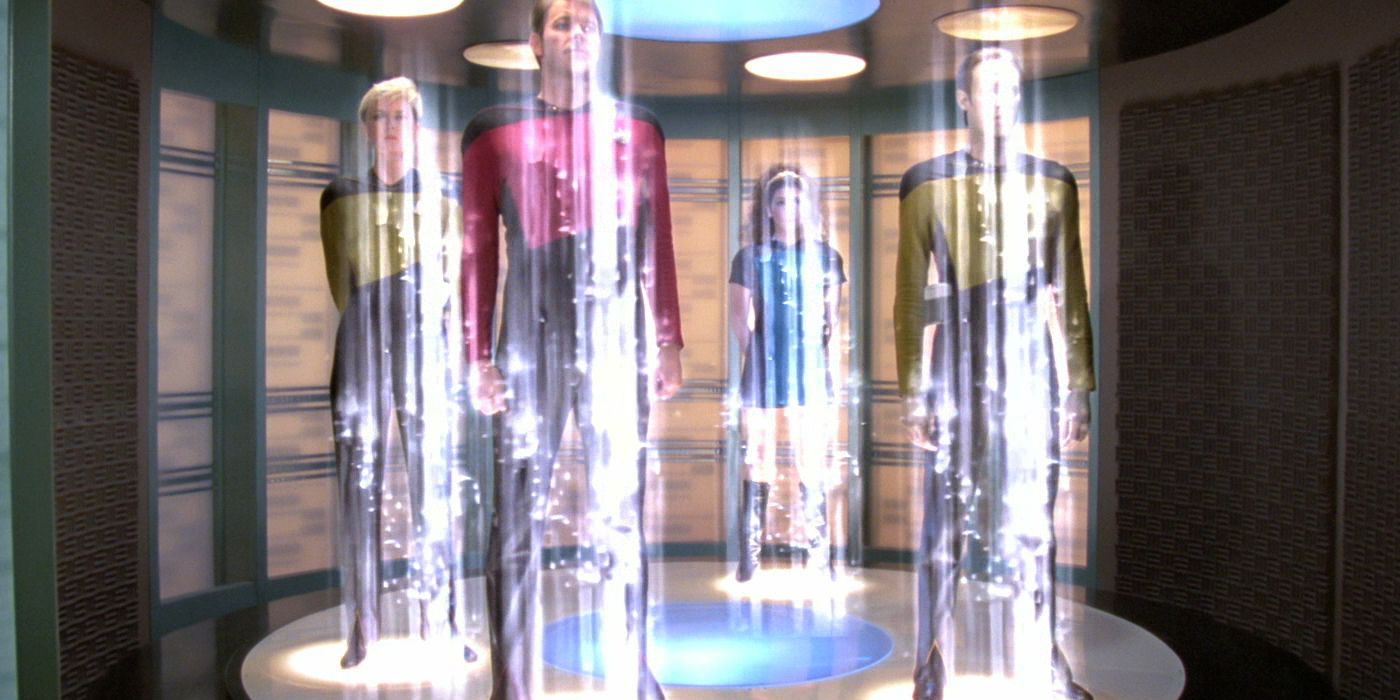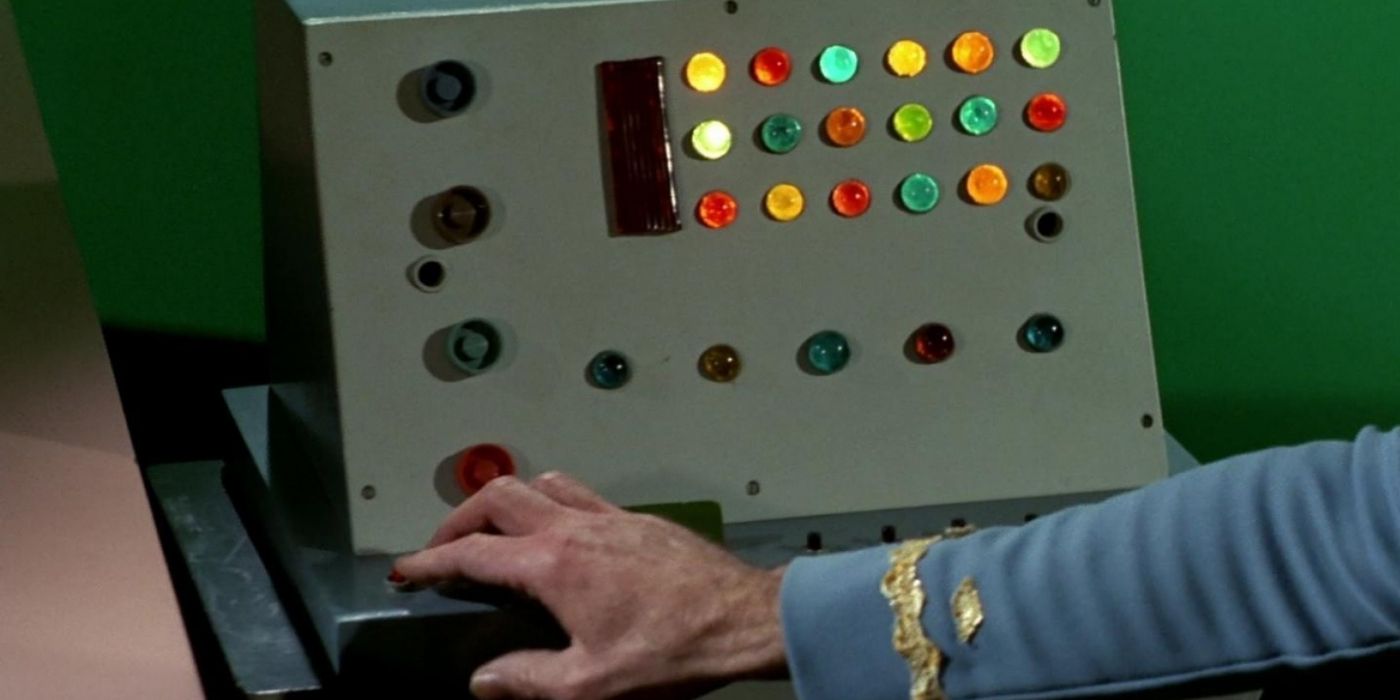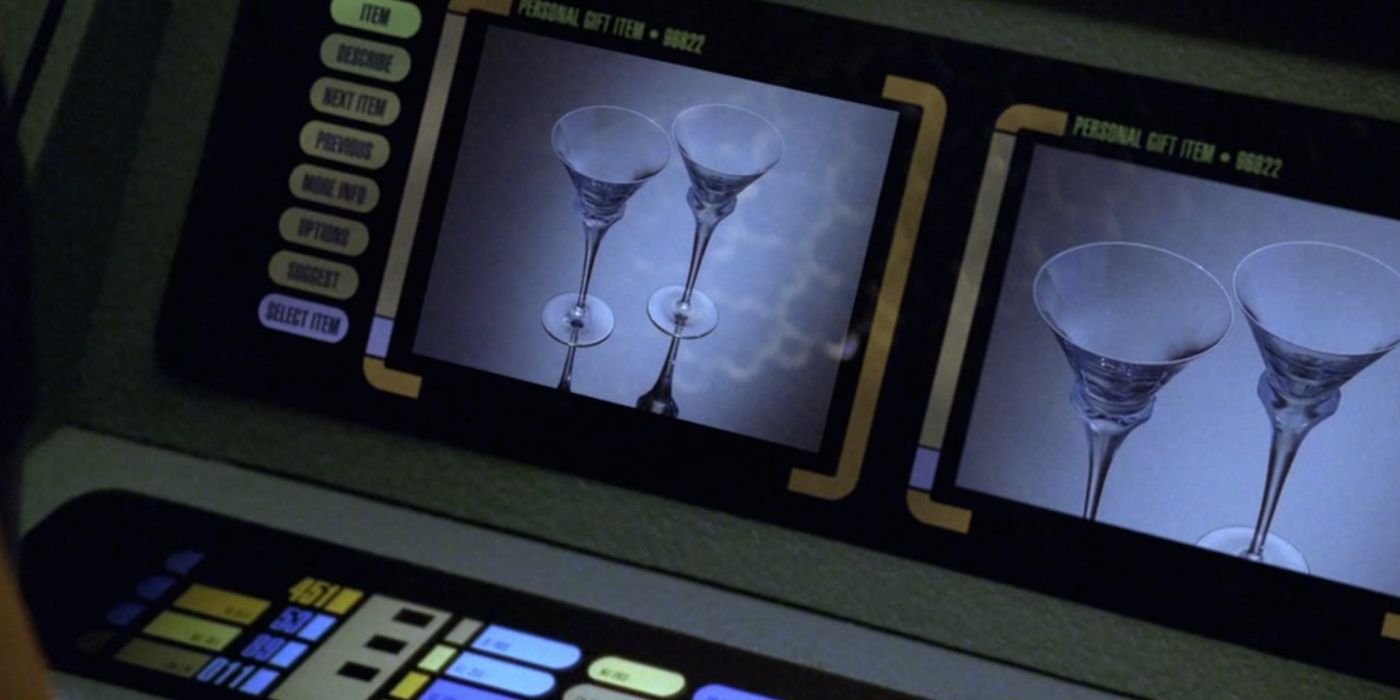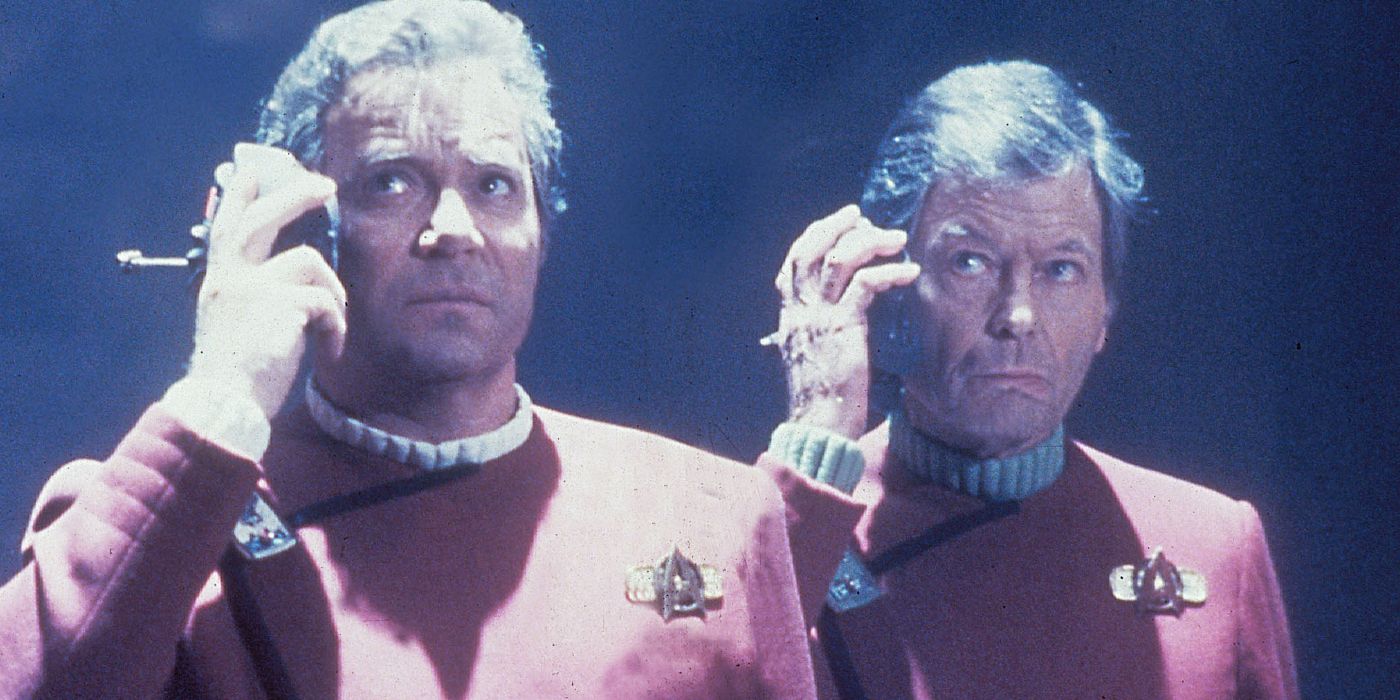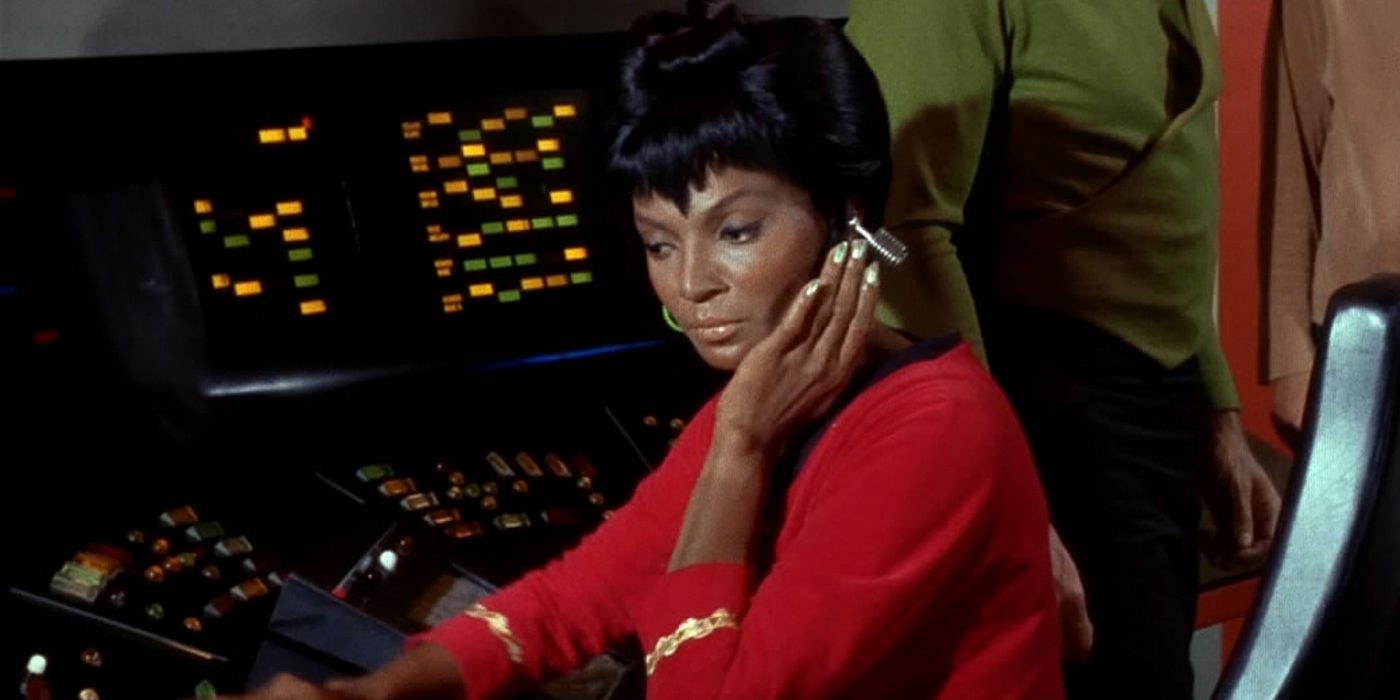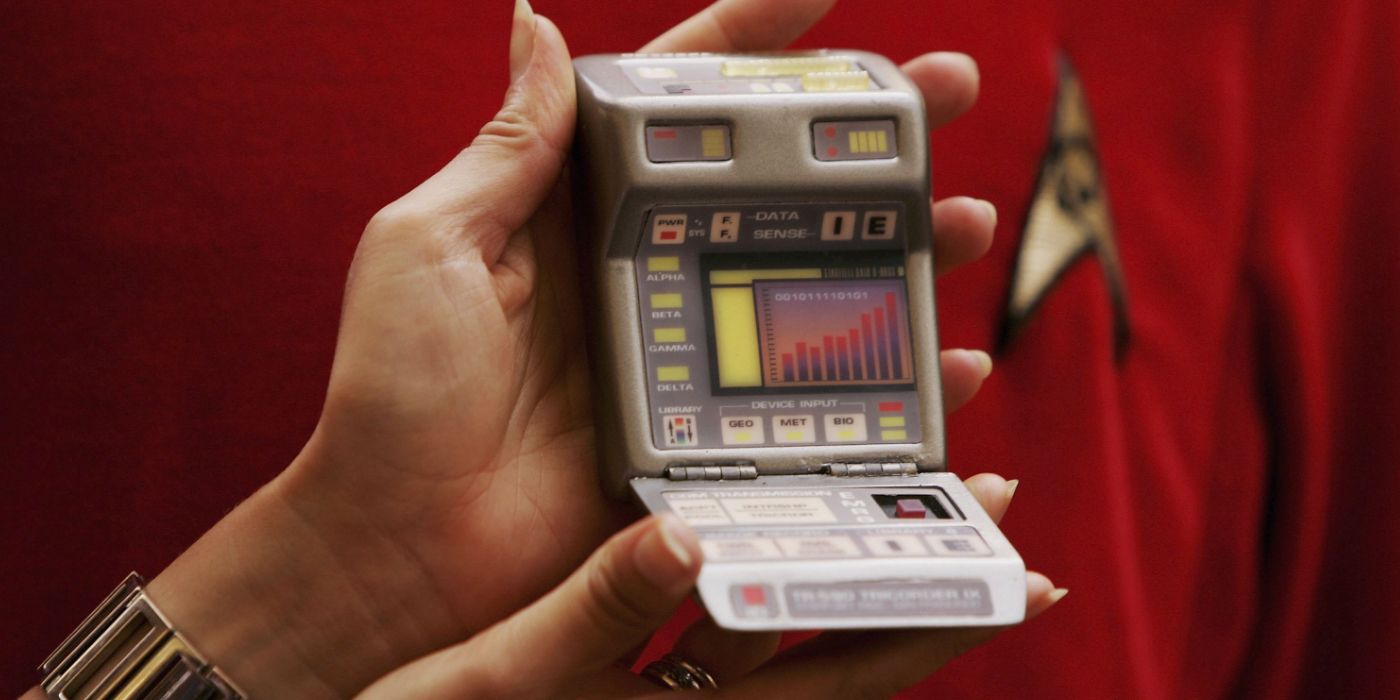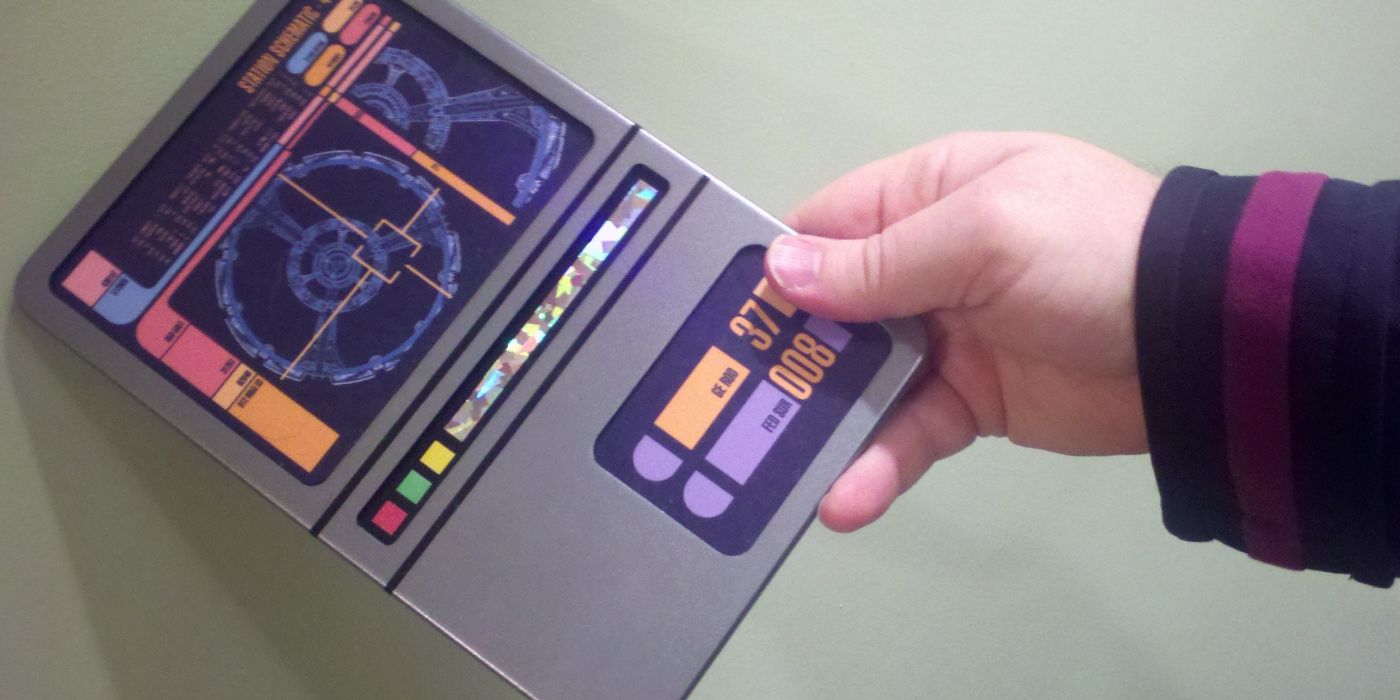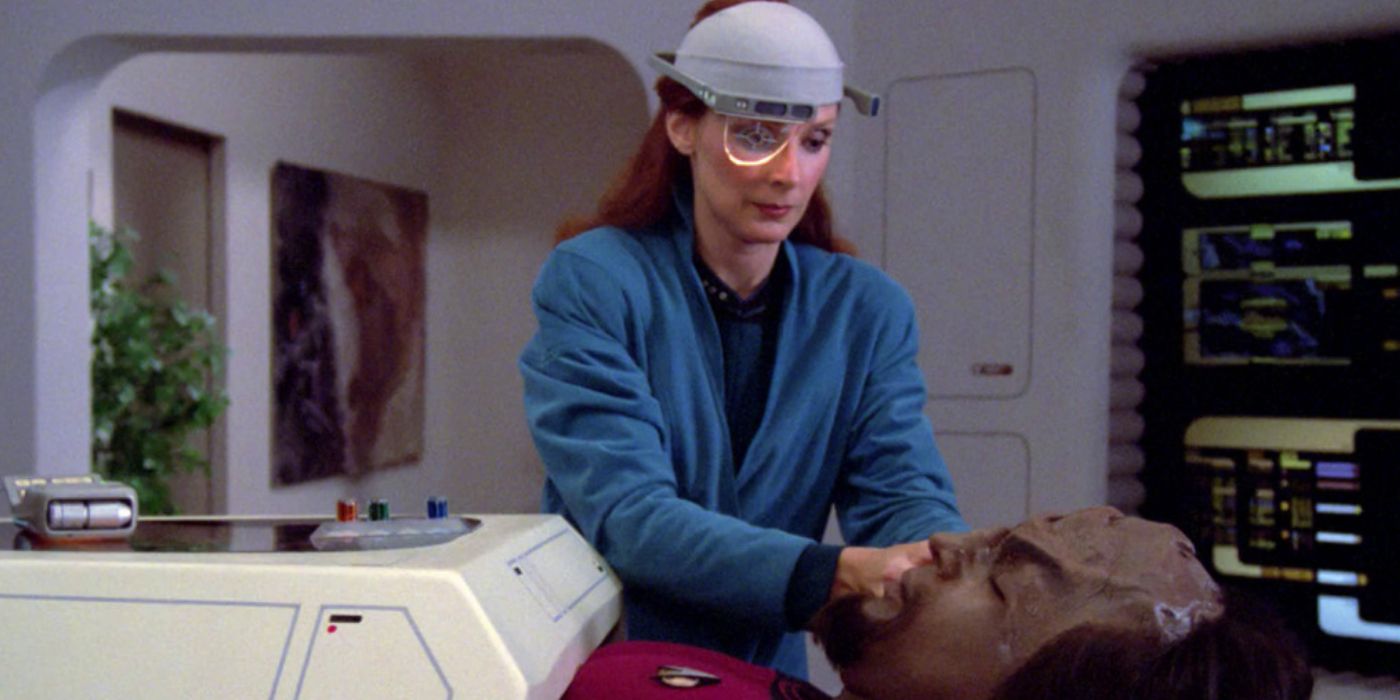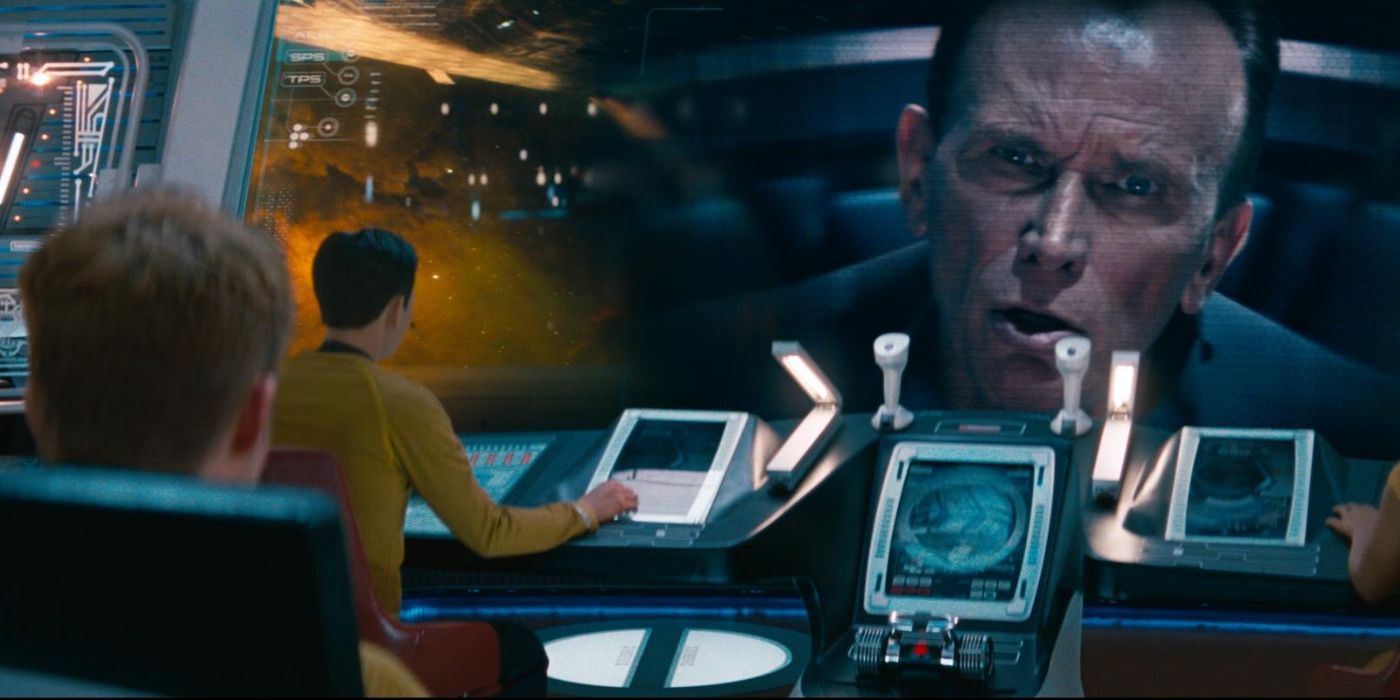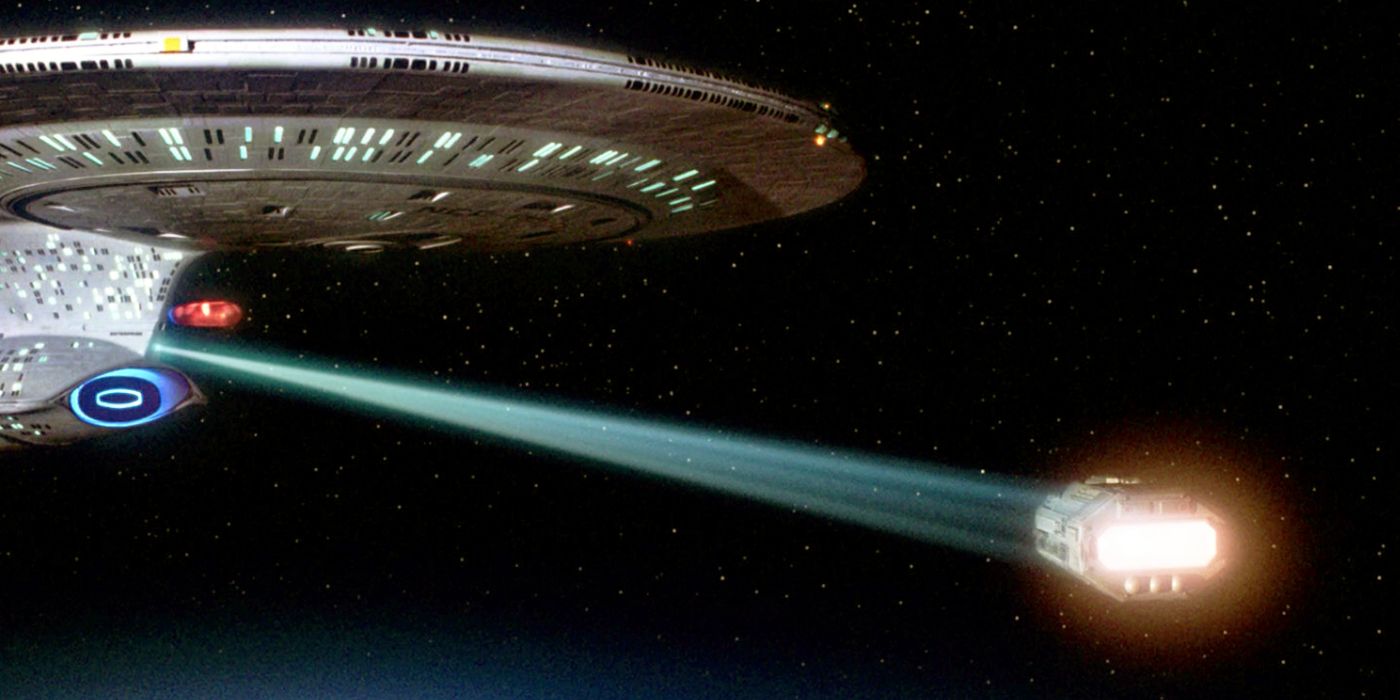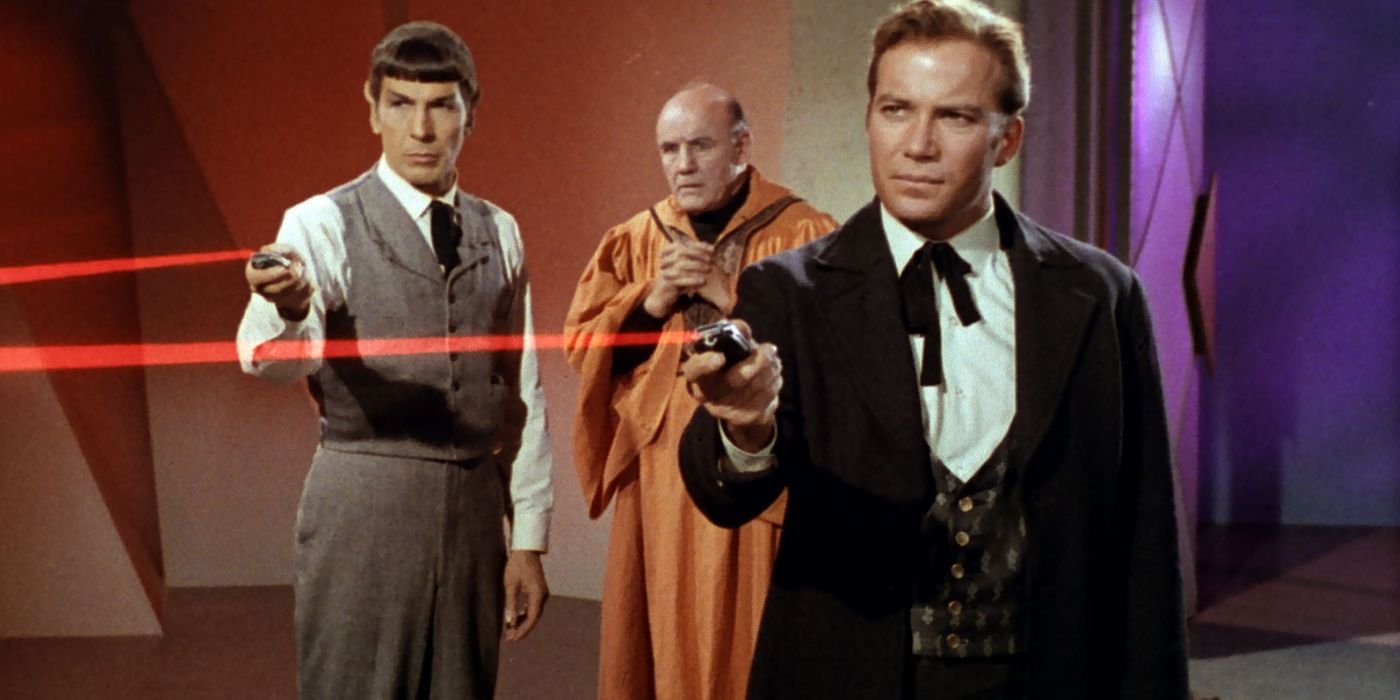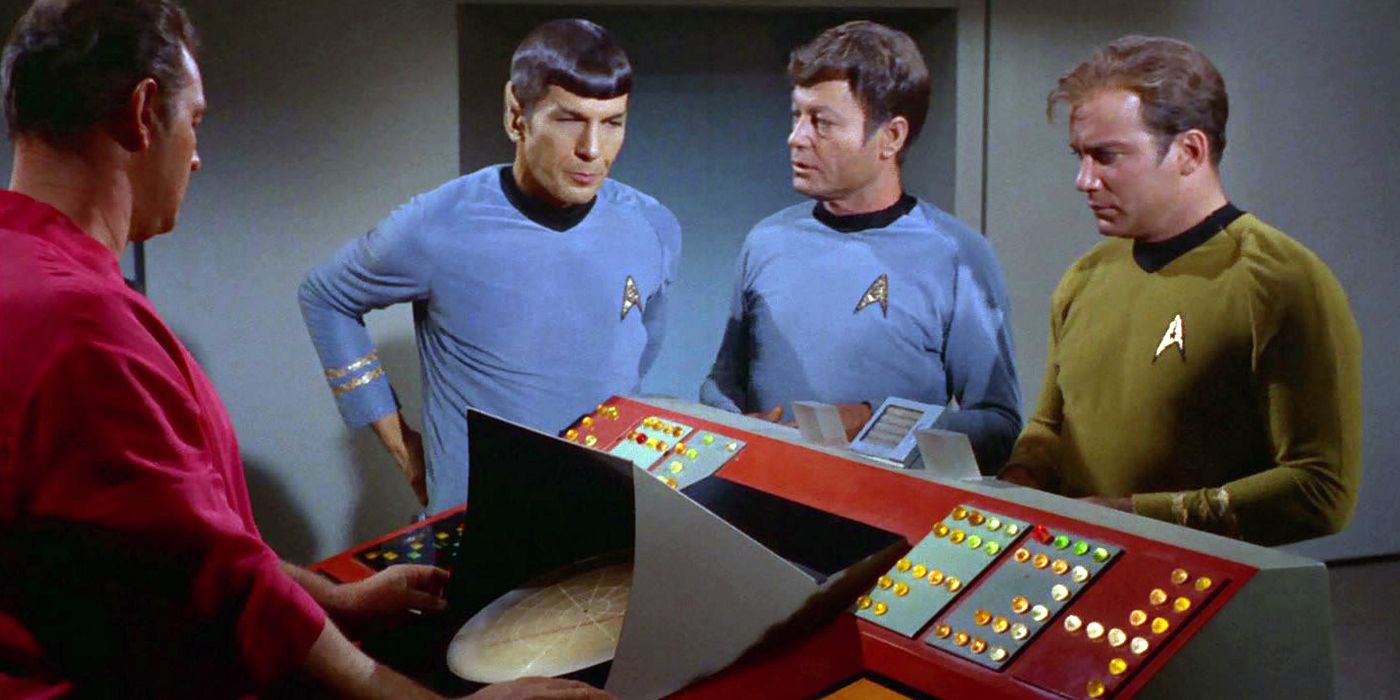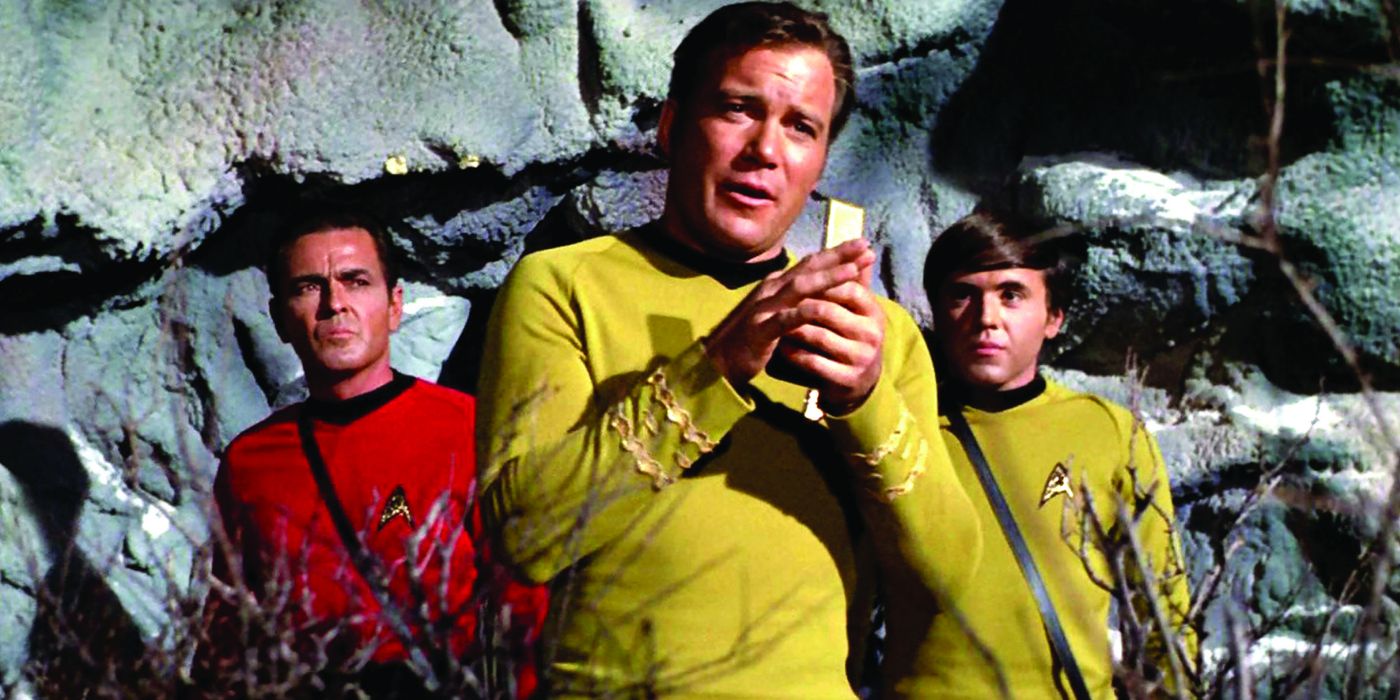Later this year, fans of the legendary science fiction television series Star Trek will celebrate the fiftieth anniversary of its original broadcast. With its optimistic view of a future that sees people of all races cooperating for the good of humanity, Star Trek was ahead of its time in many respects, and in the years since, subsequent stories within the franchise have gone further to predict the development of the human race.
In the years since its debut, Gene Roddenberry’s most famous work has gone on to inspire a wide variety of scientific breakthroughs and developments. Many of the gadgets and household technological marvels that are taken for granted now were initially popularized on Star Trek, and in many cases, inventors have looked directly to the show for inspiration on how to develop practical uses for new discoveries and inventions.
Here are 15 times that Star Trek predicted the technology of modern life:
15. Big Screen Television
It’s hard to think now of what watching the original series of Star Trek at the time of its initial broadcast would have been like. Televisions of the 1960s were a far cry from the large, high definition marvels of modern life, and it’s no doubt that the limitations of the TV sets of the era went some way to hide the less impressive elements of production, such as poorly choreographed fights and cheesy special effects, which modern viewers of the show enjoy poking fun at.
It’s interesting to think that in many ways, Star Trek pioneered the idea of large screen displays – when the show initially debuted, the idea of a large television or computer screen that displayed lifelike visuals was completely unheard of. In the years since Star Trek first aired, great advancements have been made in producing bigger, brighter, and clearer television sets – that the show predicted this development decades before the technology was a reality is a pretty impressive insight into the future.
14. Cellular Phones
Probably the most obvious prediction that the original Star Trek series got right, the idea of personal communicators that could be used as portable telephones was a fantastical concept back in 1966 that is an often overlooked technological marvel today.
To a certain extent, it’s difficult to separate where Star Trek’s prediction of phones ends, and its actual influence on the development of the technology begins. Martin Cooper, the man often credited with the invention of the first viable cellular phone, has stated publicly that he was very much inspired by the version of mobile communicators put forward by Star Trek. As the technology further developed, Star Trek’s influence would grow, as phone developers went on to create flip phones that exactly matched the props used in the television series.
While flip phones have since been replaced with smartphones for most people, this evolutionary step for the technology comes straight from the world of Star Trek, and it’s worth wondering how phones might have developed differently without the show.
13. Teleporters
Scientists have been working to create viable teleportation for decades – such technology would make transport of goods and even people across vast distances far easier. Throughout this time, whenever the subject of teleportation comes up, it’s difficult to avoid thinking of the portrayal of the technology in Star Trek.
While human teleportation is still a long way from being feasible, scientists are making progress on the concept. Many different versions of teleportation have been explored – one key development is known as quantum teleportation, which involves sending information regarding atomic locations between two points. While the experiments in quantum teleportation may well lead to the teleportation of larger objects in future, it also goes a long way to solving another technological challenge from Star Trek: the ability to communicate across vast distances instantaneously – radio waves are only capable of travelling at the speed of sound, after all, and are therefore unhelpful for communicating across the vast depths of space.
For a more practical form of teleportation, one German company has proposed an alternative solution: a 3D printer which scans an object and produces an exact replica at another location. This could also prove the first steps towards being able to instantaneously transport items across vast distances, although for obvious reasons it’s hardly ready for human use just yet.
12. Intelligent Personal Assistants
Star Trek features many computers which users can speak directly to and receive logical, sensible answers from a device that both understands human speech, and is able to respond in kind, without the need for any kind of viewscreen or other inputs.
While even as little as a decade ago this technology seemed completely impossible, now many smartphone and computer users regularly engage in voice activated conversation with digital personal assistants such as Siri and Cortana.
Developments to make these devices smarter is ongoing, and with scientists making inroads to producing machines that can pass the Turing Test (an experiment to see if a computer can accurately fool users into thinking they’re talking to a human), this technology will continue to develop to be smarter at interpreting our needs. That said, a recent AI project created by Microsoft to interpret and learn from online communications had to be shut down as it was influenced too much by internet hatespeech, so there’s still some way to go before this technology is perfected.
11. Replicator
The concept of a replicator – a device that can produce any object instantly from a digital blueprint – is one that fits right in with the advanced near-magic technology of the Star Trek universe. In creating such a device for the show, it wasn’t necessary to think too hard about the scientific logic behind the replicator, and the convenient macguffin features as a central element of several Next Generation episodes.
In reality, though, replicators are becoming a more affordable item every day, as the price of 3D printers drops dramatically. While 3D printers lack many of the capabilities of Star Trek’s replicators – for example, most printers can’t produce food and can only use plastic as a building material – there is a wealth of practical applications for the device.
In particular, it’s expected that as 3D printers become more widely accessible, repair costs for devices such as washing machines will drop, as customers will be able to download replacement parts directly to their 3D printers, saving a lot of time and hassle to keep household machines running smoothly.
10. Universal Translator
In a show that deals with the difficulties and nuances of interactions between a variety of alien races, Star Trek needs a simple way of explaining away communication barriers. While in many instances aliens conveniently speak fluent English, other circumstances call for a universal translator: a device that can instantly listen to any language and output a second language for the user to understand.
While Google Translate has for many years been the butt of jokes surrounding automatic translation, many companies are making real headway in developing translation software that can not only cope with complex sentences, but can produce a translation instantaneously simply by listening to the speaker.
Versions of this software are available as smartphone apps, while more complex and sophisticated version of the technology have plenty of practical applications in embassies, airports, and other international areas around the world.
9. Hands Free Phones
As the chief communications officer of the Enterprise, Lieutenant Uhura is often depicted across the course of the original Star Trek series wearing an earpiece that allows her to keep tabs on communications both across the ship and with external threats.
In what is likely another case of Star Trek’s interpretation of technology being used as the basis for real world inventions, modern day hands-free Bluetooth earpieces strongly resemble the technology used by Uhura as part of her job.
A similar device appears in the modern Star Trek movies, and it’s interesting to note that this form of technology, like much in the show, doesn’t successfully feel as advanced and futuristic as it did at the time of the original show. Considering the technological advancements that have been made over the past fifty years, it’s no wonder JJ Abrams had to make such heavy use of lens flares in order to make his movie feel scientific and visually impressive – tricks the original show did through the use of fantastical props.
8. Tricorder
Another key staple of the Star Trek original series, the tricorder is a pocket computer that’s capable of scanning the landscapes and inhabitants of alien worlds for various pieces of data, such as mineral deposits, heat signatures, and in the case of the medical version, diseases or other maladies.
As with other pieces of technology on this list, it’s often difficult for scientists to talk about scanners that they build for technological purposes in real life without referencing Star Trek’s tricorder. Various medical devices are able to scan patients to learn about injuries, such as the Handheld DNA Lab by QuantuMDx, which can scan a patient to give a diagnosis of illness in fifteen minutes.
Similarly, other machines are used for scanning the ground to gain a better understanding of its layout and composition. As far back as 1996, the Vital Technologies Corporation has created what it called the ‘Official Star-Trek Tricorder Mark 1’, which is designed to perfectly mimic the appearance and capabilities of the Star Trek device.
7. Tablet Computers
When Star Trek: The Next Generation debuted years after the original series, a concerted effort was made to make the technology of the new show stand out from its predecessor. Among the new additions to Star Trek’s technological capabilities is the concept of a flat, touchscreen computer device, no thicker than a magazine, but with significant computing power. At the time, such devices were only possible in the most distant of science fiction dramas, and it was hard to imagine a near future where such machines could be possible.
The first commercially successful tablet computer of any mainstream popularity, the iPad, debuted six years ago in 2010. In the time since then, modern life has seen the introduction of a variety of tablet computer devices, ranging from the laughably cheap to the impressively sophisticated. It’s safe to say that this is one prediction that Star Trek not only got right, but if anything underestimated just how prevalent touchscreen computers would become in the near future.
6. Eye-Top Computers
There are multiple devices which appear over the course of The Next Generation which bear more than a passing resemblance to Google Glass. The machines are typically used in Star Trek as a quick and convenient answer to heads up displays, providing precision guidance for weapons or medical tools by giving the user a better, more detailed view of what they’re doing.
In practice, while Google’s ill-fated eye-top computer may have looked similar to these devices, it didn’t have quite the functionality of the machines envisioned by Star Trek. While the Google Glass didn’t manage to take off, there are a range of ongoing projects within the tech world, researching the viability of augmented reality to create heads up displays that can help guide the user through their daily tasks. Most notably, Microsoft is currently developing what the company is calling the HoloLens, which involes an eye-top machine that projects hologram-like images into the user’s line of vision, copying yet another classic Star Trek technology. Among the experts working on the project is none other than Casey Hudson, director of the Mass Effect trilogy of games, which also took more than a little inspiration from Star Trek.
5. Video Calls
At the time that the original Star Trek series debuted, the idea of seeing video when talking to someone on the phone wasn’t a new concept, but it was a long way from being commercially viable. The technology required to make this element of science fiction a reality has existed for several decades, but it took a long time for the idea to take off among the public. Telecommunications companies tried several times to get the public excited about 3G video phone calls, but due to the expense of the phones required, the cost of using networks for this purpose, and the fact that anyone a person wanted to call also needed to have a video phone, early attempts to introduce the technology fell flat.
It was only once smartphones and high speed internet became commonplace that cheap, convenient video calls became a reality. Now, this technology is a common part of everyday life, and it’s hard to imagine a world ten years ago that was skeptical about video phones ever becoming a popular reality.
4. Tractor Beams
Star Trek’s tractor beam, a concept that has appeared in science fiction since the 1930s, rests on the idea of a high powered energy beam locking on and attracting a foreign object, spaceship, or person. The idea, originally called an ‘attractor beam’, has appeared in a wide range of science fiction stories in the years since its original inception.
Scientists have been working for a long time to try and bring tractor beams into reality. In 2015, a team of UK-based engineers made the announcement that they’d invented a way to use soundwaves to move tiny objects of up to 5mm in size physically without touching them. The scientists stated that they believe such technology in its current form has a lot of potential for medical usage, and it’s expected that further study will lead to the development of larger, more powerful tractor beams that can move heavier objects in the future.
3. Phasers
The weapons in Star Trek don’t rely on bullets or other projectiles – instead, phasers shoot bolts of energy which can be set to either cause serious damage to an opponent, or simply stun them for a short time, thereby being useful in situations where the user doesn’t want to kill their target.
Real-world alternatives to phasers, which use electric energy to incapacitate enemies have been in use since the 1970s – the most common brand name for these devices is the Taser, which, much like the stun setting of phasers in Star Trek, generally won’t do permanent damage to people that the device is used on.
While Tasers don’t quite have the science fiction sheen that Star Trek phasers do on the show, the devices work on a similar principle, and advancements are being made to the technology all the time to make them more effective and formidable for use against a variety of opponents.
2. Bionic Eyes
Star Trek: The Next Generation features a character called Geordi La Forge, who is blind but is able to see through the use of a special visor that provides a wealth of information to his brain about the various energy waves which surround him. In later appearances in Star Trek, the character is instead shown with cybernetic eyes which have replaced his own and which provide him with a similar view of energy waves around him.
The technology required to bypass the human eye and provide a measure of sight to the blind has existed for a while, although it’s still very much in its infancy. As far back as 2006, scientists were using cameras which connect to the user’s brain to provide limited sight to some blind patients. Various studies by major universities are currently ongoing to produce glasses and other peripherals which can completely restore sight to the blind.
1. Personal Computers
Modern computer users are often spoiled for choice when compared with the technology that was available fifty years ago – between miniature computer smart phones, tablet computers, and desktop machines, it’s common to own multiple personal computers and to even use several of them at the same time for different tasks.
It’s easy to forget that at the time of Star Trek’s initial broadcast, the idea of a powerful personal computer was decades away from fruition. Computers of the era were enormous devices that required a lot of space and were prohibitively expensive, meaning that seeing ensigns about the starship Enterprise working on personal computers was an unbelievable concept.
It’s likely for this reason that many computers within the show were voice activated – even the idea of a keyboard and mouse were a long way from development during the 1960s, and not all computers aboard the Enterprise even had their own monitors or screens. The primitive bulky computers that appear in the early television series are laughable in their inaccuracy, but Star Trek did successful predict that one day computers would become small enough and cheap enough for commonplace personal use.
Conclusion
The world has changed a lot since Star Trek initially debuted. As fans gear up for a third instalment in the new, rebooted Kelvin timeline, it’s worth remembering not just how far the show has developed over the past fifty years, but also how far humanity has come.
Star Trek may not have been the original source of many of the ideas on this list, but the television show certain popularized many science fiction concepts that were later created in real life, often by scientists who’d first been inspired by watching the adventures of Captain Kirk and his crew. For providing that inspiration, Gene Roddenberry’s science fiction universe deserves significant respect and gratitude.
Which other inventions has Star Trek influenced? Which is your favorite technology on this list? Share your thoughts in the comments section below.

